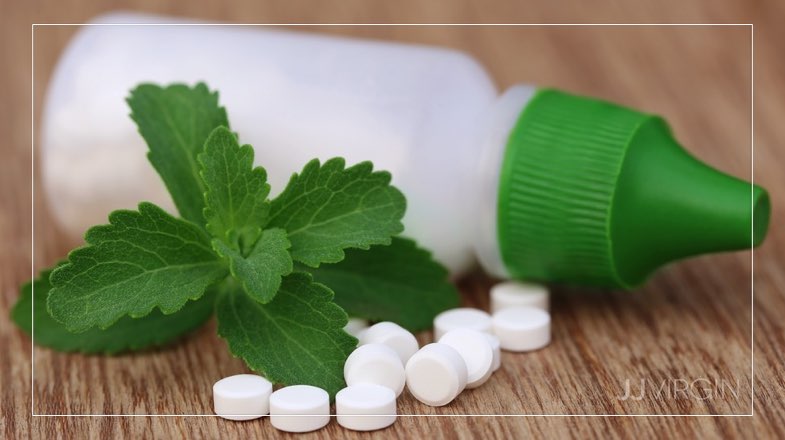This is Part 2 of a 3 part series on sweeteners.
In my last blog, link I discussed 4 sugar alternatives that manufacturers cleverly position as better than the real stuff. However, some undercover work revealed that wasn’t always the case, and agave especially warranted a “Don’t go there!” thumbs-down.
With sugar out, artificial sweeteners double out, and the 4 sugar alternatives labeled “proceed with caution” or worse, how do you make the best sweetener decision?
Let’s take a look at 5 popular ones and see if they make the grade.
Monk Fruit
Alternately marketed as “lo han sweetener,” (Not to be confused with the sometimes-troubled actress!) monk fruit has an extract 300 times sweeter than sugar.
In China, monk fruit sweetener has been used for nearly a thousand years to treat obesity and diabetes. Rich in antioxidants with anti-inflammatory benefits, one study indicated that monk fruit might offer anti-cancer and anti-diabetic benefits.
The U.S. Food and Drug Administration (FDA) classifies monk fruit as generally recognized as safe (GRAS) and there have been no reports of negative side effects.
Now, here’s where it gets complicated. You want to look for 100 percent pure monk fruit, not one with potentially harmful bulking agents. One artificial sweetener manufacturer marketed their version of monk fruit. Although they claimed it had “zero calories,” they added erythritol (good) but also sugar and molasses (not good) to their monk fruit powder.
Ultimately, as with any sweetener, be cautious about overusing monk fruit. For some people, healthy sweeteners can trigger cravings for more sweet foods. If that’s you, learn to appreciate the natural sweetness of, say, cinnamon or vanilla.
Erythritol
Erythritol is a sugar alcohol discovered in 1848 that naturally occurs in some fruits and fermented foods. (Note: sugar alcohols got their name because their biochemical structure resembles a hybrid of a sugar and an alcohol.) Erythritol has 95 percent less calories than sugar, although the FDA does label it as having some calories.
Studies show that erythritol is tooth-friendly and does not contribute to dental problems like sugar does. Another study showed that erythritol (along with xylitol) inhibited dental decay.
Erythritol also makes an ideal sweetener for people with diabetes. One study showed this sugar alcohol has no adverse effects on blood glucose levels.
Unlike other sugar alcohols, only about 10 percent of erythritol goes to your colon. (Going to your colon creates many of sugar alcohol’s laxative effects.)
Instead, your small intestine absorbs most erythritol and excretes it in your urine, bypassing the gas and bloating that other sugar alcohols can create. However, large doses (more than 50 grams) can create nausea and (very rarely) allergic hives. For the most part, however, erythritol is incredibly safe.
You often find erythritol blended with other sweeteners, or you can buy 100 percent erythritol powder at some health food stores.
Erythritol makes a promising sweetener in small amounts since it does not seem to create the gastric distress other sugar alcohols can. (Although as with any sugar alcohol, a little bit goes a long way.) I recommend that you look for 100 percent erythritol or an erythritol/stevia blend. Again, read those labels. It should not contain any corn, sugar, or other bulking ingredients.
Xylitol
Xylitol is a naturally occurring sugar alcohol with sweetness similar to sucrose, but with 33 percent fewer calories than sugar.
Manufacturers used to derive xylitol from birch trees, but now it more likely comes from either cornhusks or a blend of corn and birch. Scientists claim no molecular difference exists between sources, though you know from The Virgin Diet I’m no fan of corn in any form.
Because it doesn’t raise glucose like sugar does, Europeans have used xylitol for over a century as a sweetener for people with diabetes. Whereas table sugar has a glycemic index of 100, xylitol ranks only a seven. (The glycemic index ranks how quickly a food raises your blood sugar levels.)
Xylitol has an impressive history of reducing occurrence of cavities. The FDA allows manufacturers to claim xylitol does not promote dental caries.
Studies show you can ingest large amounts of xylitol with no toxic effects. The problem is xylitol’s laxative effects, including diarrhea, gas, and bloating. Much like with fiber, starting low and gradually upping the amount of xylitol you use will help lessen these unpleasant effects.
Worth mentioning: don’t let your canine companions anywhere near xylitol. Studies show xylitol can be fatal to dogs.
You can buy xylitol as a powder in most health food stores. Xylitol used to be found in many chewing gums, but sadly aspartame and other artificial sweeteners now give chewing gums their sweetness.
If you can find birch tree-derived xylitol and it’s your preferred sweetener, great; just remember too much at once can create an unpleasant aftermath!
Stevia
Stevia is an herb that grows in North and South America that’s 300 times sweeter than sugar.
It has no known adverse effects on blood sugar. One study even found it can enhance glucose tolerance and improve metabolic syndrome, which makes stevia ideal for people with insulin resistance and diabetes.
Here’s where it gets complicated. A 1985 study reported stevia is a mutagen in rats and created potential liver problems. This research was later debunked as flawed, and it was determined limited amounts of stevia aren’t dangerous.
Regardless, stevia now carries a controversial history. In 1991, the FDA labeled stevia an “unsafe food additive,” and manufacturers must classify stevia products as dietary supplements rather than sweeteners.
But wait, you say: how can manufacturers sell stevia-based sweeteners in the sugar aisle? Because these sweeteners use rebaudioside A, which is derived from the stevia plant, but the FDA claims is not stevia but “a highly purified product.”
While some complain of a bitter aftertaste, stevia is the preferred sweetener for many people on a low-sugar impact diet or with blood sugar issues. Beware that, because it has zero calories, stevia can create “caloric dysregulation,” which means the degree of sweetness no longer matches the caloric load, leading to cravings and overeating.
Just like with the other sweeteners described here, if you use stevia, opt for the pure, organic form. Many stevia “blends” contain maltodetrixin (corn) and other sweeteners.
Glycine
Glycine is an amino acid that has the power to regulate blood sugar by converting glucose into energy, making it an ideal sweetener to stabilize blood sugar levels for people with insulin resistance and diabetes. Because it has a sweet flavor, this amino acid makes an excellent sugar alternative.
It also provides some therapeutic benefits for insulin sensitivity and diabetes. One study with 74 diabetic participants found glycine improves immune responses and may help prevent inflammation-triggered tissue damage in patients with type 2 diabetes.
You can find a pure glycine powder or one blended with other natural sweeteners. This non-essential amino acid can be an ideal sweetener, especially if you can benefit from its effects on blood glucose.
Conclusion
I’ll be honest. I have never seen a store sweetener that I absolutely love. Every one has a drawback or two, whether that’s a funky aftertaste or unacceptable bulking agents.
Be sure to check out Part 3, where I provide 5 rules to make your best natural alternative sweetener choice.






